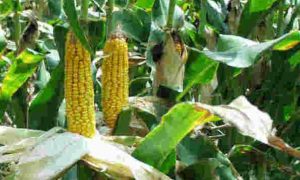Government considering sweet sorghum as additional feedstock for ethanol, sources say

Sweet sorghum, a potential ethanol feedstock, is gaining attention in India. The PMO is promoting its commercial cultivation after a review meeting highlighted slow progress. New varieties like CSV 58SS offer higher juice yields, but challenges include lower yields and the lack of a fixed ethanol price. Sweet sorghum’s low water requirement and fast growth make it a promising alternative.
Sweet sorghum, considered an alternative to sugarcane in production of ethanol, may get a push after PMO stepped in to help scientists popularise the varieties developed by Hyderabad-based Indian Institute of Millets Research (IIMR) for their commercial cultivation. “There was a meeting held in August to take a review of the sweet sorghum crop and its possibilities in India with regard to biofuel production. Since, there is no nodal ministry involved in this ethanol blending programme and responsibility is spread among different departments, the progress on sweet sorghum was slow, even as the first variety was developed in India in 1992,” a source said. Top official sources said that the Prime Minister’s Office is keen to see the use of sweet sorghum as an additional feedstock for ethanol amid the issue with availability of sugarcane, rice and maize in some years.
Varanasi-based Bhagwan Ram Trust has conducted trial of sweet sorghum crop last year in a one-acre land and took the trial to Jaspur district in Chhattisgarh this kharif season, sources said. After harvesting the crop in September, the Trust is gearing up to expand the area with support from local authorities, said a volunteer associated with the sweet sorghum project.
He said, the Trust has used the crop for feed, for making syrup and also some quantity as flour after processing the grain. But the variety was brought in from the US, he added.
Juice content up
According to A V Umakanth, a principal scientist at IIMR, the juice content in CSV 58SS variety, released this year, has increased to 15,000-16,000 litres per hectare as against the first variety SSV 84, released in 1992, having 12,000-14,000 litres per hectare. He said that the popularisation of sweet sorghum is linked with its industrial application as a feedstock for ethanol and only a suitable policy can help achieve that. Asked why farmers are not adopting the sweet sorghum when they are already cultivating normal sorghum, he said the yield is 40-50 per cent lower and has to be compensated suitably.
The yields realised in various pilot studies, conducted by IIMR in various sugar mills, show that ethanol recovery was 9-11 per cent of juice whereas ethanol yield was 40-55 litres per one tonne of stalks crushed. On the other hand, from one tonne of sugarcane crushed, distilleries get 70 litres of ethanol.
Low water requirement
Umakanth said that while sugarcane crop is of 12 months’ duration or even more, sweet sorghum can be grown minimum twice and even three times a year as its duration is 125 days (CSV 58SS variety). “Sweet sorghum has a low water requirement — about half the quantity of water required by sugar beet and one-third of water used in sugarcane,” he added. The government is yet to make a price policy for sweet sorghum for production of ethanol. Currently oil marketing companies buy ethanol at different rates based on feedstock – sugarcane juice, molasses, rice and maize. Industry sources said that unless a price is fixed for ethanol from sweet sorghum, mills cannot take steps to encourage its cultivation and farmers will adopt only if an assured buyer is available. Sources said that some seed companies are selling sweet sorghum in the North for forage as cattle feed costs have gone up.
















